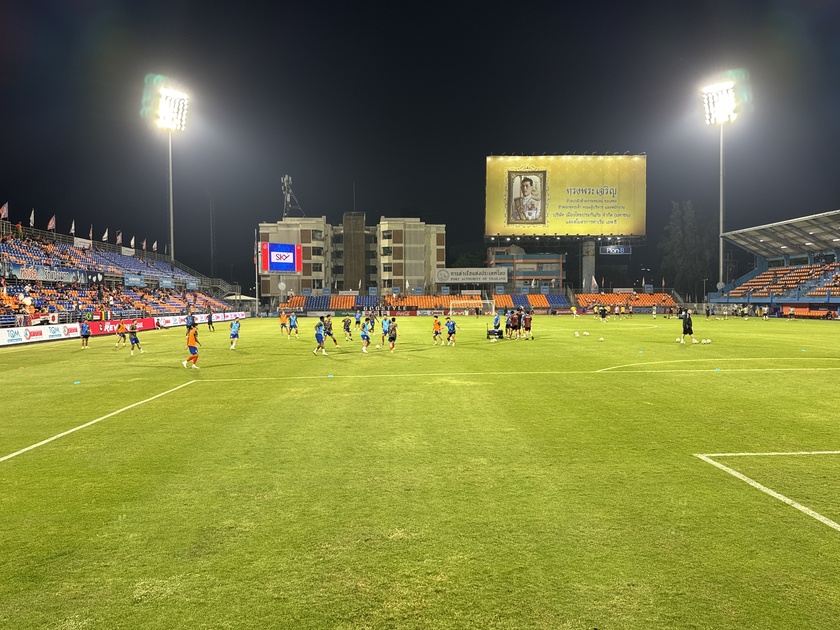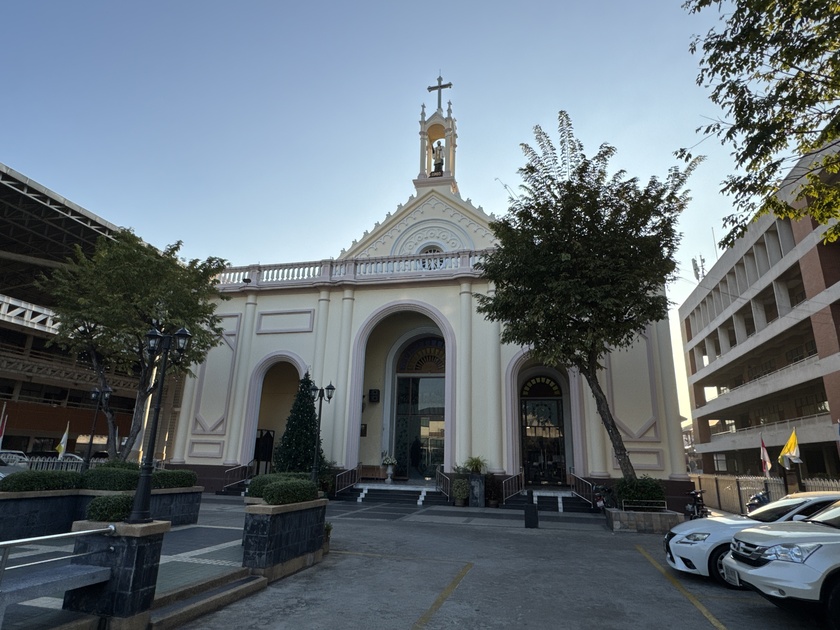Port FC hosts the Lamphun Warriors, in a battle at PAT Stadium in Khlong Toei. Port sits in third place so are in need to get 3 points in order to stay relevant in the standings. Lamphun is in 11th and need the points to avoid being in danger of relegation at the end of the season. Lamphun has some talent plus a few players that at one time were wearing Port colors.
As always the atmosphere at PAT Stadium is lively, demonstrating why Port fans are the best and most passionate in Thai football.
Port shined in the second half and generated a lot of much needed offense. It was much closer than it should’ve been with some timely saves by the Lamphun keeper.
Port FC vs Lamphun Warriors January 8th, 2025 - Battle to Start the Second Half - Bangkok Thailand
Ban Yuan Morning Market (also known as the Vietnamese Sunday Market or Baan Yuan Market) is a small, charming Sunday morning market in Bangkok’s historic Vietnamese community, often referred to as “Little Vietnam” or Baan Yuan (บ้านย่าน, meaning “Vietnamese Village”).
It is located directly behind St. Francis Xavier Church (วัดนักบุญฟรังซิสเซเวียร์ or โบสถ์ซาเวียร์) in the Samsen area (Dusit district), near the Chao Phraya River. The market operates every Sunday from around 6:00 AM to 10:00 AM, primarily serving the local Vietnamese Catholic community after morning mass.
It’s located on Samsen Soi 11–13 (Soi Mittrakham / Soi Mittakham), off Samsen Road. The market stalls set up in the lanes right behind the church.
It’s a small, authentic street market with Vietnamese street food (e.g., bánh cuốn, kuay jab yuan noodles, stuffed crepes khanom bueang yuan, spring rolls, roast pork, and ...
Wat Phra Khao (วัดพระขาว), located in Phra Khao Subdistrict, Bang Ban District, Phra Nakhon Si Ayutthaya Province, is an ancient active Buddhist temple believed to have been established during the Ayutthaya period (likely around the mid-18th century AD, with some estimates placing it circa 1707 AD based on traditional accounts). The temple’s name derives from its principal Buddha image, Luang Pho Khao (หลวงพ่อขาว), a large stucco statue painted white that has been venerated since ancient times.
The temple received its official wisungkhamasima (consecrated ordination hall boundary) on September 27, 1927 AD. Unlike many temples in central Ayutthaya that were destroyed in the fall of the kingdom in 1767 AD, Wat Phra Khao survived largely intact, preserving rare Ayutthaya-era kasat lai rot nam (gold leaf stencil murals) inside the ubosot—considered some of the finest and most elaborate examples from that period. These intricate wall paintings, along with ...
The Chang FA Cup, officially the Thai FA Cup, is Thailand’s premier knockout football competition, organized by the Football Association of Thailand. First held in 1974, it ran intermittently until 1999 before being discontinued and relaunched in 2009 to revive national cup football. Sponsored by Chang Beer since 2015, it has become known as the Chang FA Cup. The tournament is open to clubs from all levels of Thai football, offering lower-division teams a chance to upset top-tier sides. The winner qualifies for the AFC Champions League Elite qualifying play-off and the Thailand Champions Cup, with the champion receiving a prize of 5 million baht.
Port FC, based in Bangkok, is a historic club founded in 1967, originally linked to the Port Authority of Thailand. They play their home games at PAT Stadium. Port has established itself as a consistent force in the Thai League 1 since returning to the top flight in 2017, with strong performances in recent seasons, including qualification for ...

















































